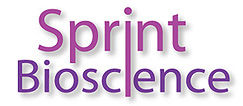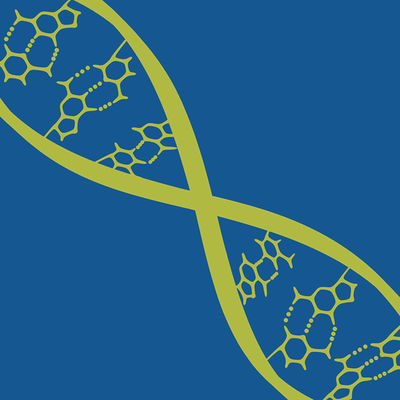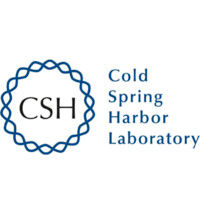Request Demo
Last update 08 May 2025
Vps34
Last update 08 May 2025
Basic Info
Synonyms hVps34, Phosphatidylinositol 3-kinase catalytic subunit type 3, Phosphatidylinositol 3-kinase p100 subunit + [8] |
Introduction Catalytic subunit of the PI3K complex that mediates formation of phosphatidylinositol 3-phosphate; different complex forms are believed to play a role in multiple membrane trafficking pathways: PI3KC3-C1 is involved in initiation of autophagosomes and PI3KC3-C2 in maturation of autophagosomes and endocytosis (PubMed:14617358, PubMed:33637724, PubMed:7628435). As part of PI3KC3-C1, promotes endoplasmic reticulum membrane curvature formation prior to vesicle budding (PubMed:32690950). Involved in regulation of degradative endocytic trafficking and required for the abscission step in cytokinesis, probably in the context of PI3KC3-C2 (PubMed:20208530, PubMed:20643123). Involved in the transport of lysosomal enzyme precursors to lysosomes (By similarity). Required for transport from early to late endosomes (By similarity).
(Microbial infection) Kinase activity is required for SARS coronavirus-2/SARS-CoV-2 replication. |
Related
9
Drugs associated with Vps34Target |
Mechanism Vps34 inhibitors |
Active Org. |
Originator Org. |
Active Indication |
Inactive Indication- |
Drug Highest PhasePreclinical |
First Approval Ctry. / Loc.- |
First Approval Date20 Jan 1800 |
Target |
Mechanism Vps34 inhibitors |
Active Org. |
Originator Org. |
Active Indication |
Inactive Indication- |
Drug Highest PhasePreclinical |
First Approval Ctry. / Loc.- |
First Approval Date20 Jan 1800 |
Target |
Mechanism Vps34 inhibitors |
Active Org. |
Originator Org. |
Active Indication |
Inactive Indication- |
Drug Highest PhasePreclinical |
First Approval Ctry. / Loc.- |
First Approval Date20 Jan 1800 |
2
Clinical Trials associated with Vps34NCT01985191
A Phase 1 Study of Combination Therapy With SAR405838 and Pimasertib in Patients With Advanced Cancer
Primary Objectives:
To determine the recommended Phase 2 dose of SAR405838 / pimasertib combination therapy in patients with solid tumors.
To assess the anti-tumor activities of SAR405838 / pimasertib in patients with solid tumors.
Secondary Objectives:
To characterize the pharmacokinetic profile of SAR405838 and pimasertib.
To evaluate the pharmacodynamic effect of the SAR405838 and pimasertib.
To characterize genetic status in tumor tissue and circulating tumor DNA.
To determine the recommended Phase 2 dose of SAR405838 / pimasertib combination therapy in patients with solid tumors.
To assess the anti-tumor activities of SAR405838 / pimasertib in patients with solid tumors.
Secondary Objectives:
To characterize the pharmacokinetic profile of SAR405838 and pimasertib.
To evaluate the pharmacodynamic effect of the SAR405838 and pimasertib.
To characterize genetic status in tumor tissue and circulating tumor DNA.
Start Date01 Nov 2013 |
Sponsor / Collaborator  Sanofi Sanofi [+1] |
NCT01636479
A Phase 1 Study to Assess the Safety, Tolerability, Pharmacokinetics, and Biological Activity of SAR405838 in Patients With Advanced Cancer
Primary Objectives:
To determine safety and the maximum tolerated dose (MTD) of SAR405838 through the characterization of dose-limiting toxicities (DLTs).
To assess biological activities in patients with dedifferentiated liposarcoma during MTD cohort expansion.
Secondary Objectives:
Pharmacokinetic (PK) profile of SAR405838.
Biomarkers in association with SAR405838.
Anti-tumor activity in response to SAR405838.
Food effect on SAR405838 PK.
Compliance with SAR405838 treatment.
Cytochrome P450 3A4/5 (CYP3A4/5) activity.
To determine safety and the maximum tolerated dose (MTD) of SAR405838 through the characterization of dose-limiting toxicities (DLTs).
To assess biological activities in patients with dedifferentiated liposarcoma during MTD cohort expansion.
Secondary Objectives:
Pharmacokinetic (PK) profile of SAR405838.
Biomarkers in association with SAR405838.
Anti-tumor activity in response to SAR405838.
Food effect on SAR405838 PK.
Compliance with SAR405838 treatment.
Cytochrome P450 3A4/5 (CYP3A4/5) activity.
Start Date13 Jul 2012 |
Sponsor / Collaborator |
100 Clinical Results associated with Vps34
Login to view more data
100 Translational Medicine associated with Vps34
Login to view more data
0 Patents (Medical) associated with Vps34
Login to view more data
1,142
Literatures (Medical) associated with Vps3401 Apr 2025·Histopathology
Subareolar sclerosing ductal hyperplasia shows PI3K pathway alterations
Article
Author: Robinson, Brian ; Lindeman, Neal ; Solomon, James P ; Hoda, Syed A ; Boyraz, Baris
03 Mar 2025·ChemMedChem
Virtual Screening and Biological Evaluation of Natural Products as Novel VPS34 Inhibitors that Modulate Autophagy
Article
Author: Wu, Baoming ; Chen, Chu ; Xu, Hanyang ; Feng, Xiaowen ; Ye, Jiqing
01 Feb 2025·Virology
Novel exploitation of autophagy by tombusviruses
Review
Author: Pogany, Judit ; Kang, Yuanrong ; Nagy, Peter D
3
News (Medical) associated with Vps3416 Aug 2023
Day One Biopharmaceuticals said that it reached an agreement giving it an exclusive global license to develop small-molecule candidates stemming from Sprint Bioscience's VRK1 programme for cancers with high unmet need. The news sent Sprint's stock surging over 260% on Wednesday.Samuel Blackman, who heads R&D operations at Day One, called the collaboration "an important continuation of measured portfolio development at [our company], which focuses on targeted therapies for children and adults with cancer in need of novel treatment approaches." He indicated that the parties will work " to advance the VRK1 programme through lead optimisation and into the clinic."The companies noted that overexpression of VRK1, which helps regulate cell division and DNA repair, is linked to poor prognosis in a variety of adult and paediatric cancers. The marker has been also identified as a synthetic lethal target in tumours where expression of its VRK2 paralogue is lost. "Silencing of VRK2 expression via promoter methylation has been noted in the majority of high-grade gliomas and high-risk neuroblastomas, providing a concrete approach for selecting patients with tumours sensitive to VRK1 inhibition," the companies said.Under the agreed terms, Day One will make an upfront payment of $3 million to Sprint and also reimburse the company for preclinical R&D expenses. In addition, Sprint will be eligible for milestones of up to about $313 million plus single-digit royalties pending achievement of certain R&D, regulatory and commercial outcomes.In 2021, Sprint entered into a collaboration worth up to $277 million that granted Deciphera Pharmaceuticals exclusive global rights to its Vps34 cancer drug programme.
License out/in
02 Dec 2022
A study sheds new light on our understanding of the metabolism in the kidneys, and how to use it for instance against SARS-CoV-2 protection.
An international study led by Aarhus University researchers sheds new light on our understanding of the metabolism in the kidneys, and how to use it for instance against SARS-CoV-2 protection. The study is published in the journal Science Signaling.
Our kidney filters 180 liters of blood every day and retains nutrients through a process called 'endocytosis' and through active transport in the kidney cells. In a new international study, an international team of researchers, led by Markus Rinschen from Aarhus Institute of Advanced Studies and the Department of Biomedicine at Aarhus University, investigated how this process of 'endocytosis' is regulated by a very central enzyme, the 'lipid kinase' VPS34, in mice. This lipid kinase is involved in vesicular trafficking and endocytic sorting of membrane proteins. A process that is crucial for the body to obtain the right nutrients, but also to block out the unhealthy ones, such a viruses.
Multiomics -- combining multiple datasets
The researchers have applied a new method of 'multiomics,' an approach where multiple data sets are combined during analysis to provide a comprehensive view of cell physiology. This approach is hypothesis-free but can quantify the functions of many transporters and enzymes as well as their interactions -- the entire system. This multiomics analysis of the study showed that a lack of lipid kinase in proximal tubule cells in mice lowered the abundance of nutrient transporters on the cell surface, which was associated with increased urinary loss of lipids, amino acids, sugars and proteins. In addition, the number of viral entry receptors on the cell surface was reduced. Accordingly, treatment with a lipid kinase inhibitor reduced the entry of the virus SARS-CoV-2 in cultured proximal tubular cells and human kidney organoids.
A gatekeeper for viral infections -- Lipid kinase
The results of the study show that blocking of the enzyme lipid kinase could be used to treat diseases in which limiting the retention of nutrients gives clinical benefit, such as kidney cancer or diabetes, or to block a viral infection of the kidney.
'Our primary goal in this study was to gather and organize novel knowledge of the fundamental processes of cell physiology. Although this is hypothesis-free, these comprehensive large-scale datasets can be central to understand medical problems. In this case, we ultimately improved targeted drug treatment for instance for kidney related diseases or infections,' said Markus Rinschen, first-author of the study and Associate Professor at the Aarhus Institute of Advanced Studies and the Department of Biomedicine at Aarhus University. 'Of course, more knowledge needs to be gathered before any conclusions regarding human relevance can be made.'
The study was a collaboration between researchers at Aarhus University, the University Hospital Hamburg Eppendorf, University of Kiel and University of Michigan.
15 Mar 2021
With seven known human coronaviruses and many others still resident in animal populations, the risk of interspecies transmission and the emergence of new strains affecting humans is an ever-present danger. Yet, more than one year into the global COVID-19 pandemic, prevention and treatment options are limited.
Broad-spectrum anti-coronavirus could address the great medical needs and help contain future outbreaks resulting from interspecies transmission. Identifying the common host factors that are essential for coronavirus replication, therefore, is an important element in developing broad-spectrum, antiviral therapeutics.
A genome-wide CRISPR study, reported in Nature Genetics and conducted by a research group from the Rega Institute and the Vlaams Instituut voor Biotechnologie, both in Belgium, identified both virus-specific and shared host factors that may be exploited for drug development against SARS-CoV-2 and the human coronavirus 229E (one of the viruses responsible for the common cold).
“We discovered that SARS-CoV-2 requires the lysosomal protein TMEM106B to infect human cell lines and primary lung cells,” the researchers wrote. “TMEM106B overexpression enhanced SARS-CoV-2 infection as well as pseudovirus infection, suggesting a role in viral entry.”
The expression of that protein correlates with COVID-19 infection, the researchers concluded after examining the results of single-cell RNA sequencing from the airway cells of COVID-19 patients.
“TMEM106B is a 274-amino acid transmembrane protein that resides in endosomes and lysosomes, controlling lysosome size, number, mobility, and trafficking,” the paper explained. “TMEM106B is poorly characterized and only recently received attention because of its role in frontotemporal dementia, the second leading cause of pre-senile neurodegeneration.”
Previous research characterized the entry step of coronaviruses, but later steps in the viral life cycle, including receptor binding, endocytosis, fusion, viral protein translation, genome replication, virion assembly, and release, are less well-understood. Those functions each may offer opportune targets for drug development.
Using CRISPR-based genetic screens, the researchers, including corresponding authors Jim Baggen and Dirk Daelemans, also “identified phosphoinositide 3-kinase (PI3K) type 3 as a common host factor for SARS-CoV-2, HCoV-229E, and HCoV-OC43.” The latter is involved in the common cold as well as encephalitis. Targeting PI3K, therefore, could potentially inhibit infections by those coronaviruses.
The researcher team “performed a CRISPR-based genome-wide knockout screen in the human Huh7 cell line, without introducing an exogenous receptor, because our SARS-CoV-2 strain induced a clear cytopathic effect in these cells,” the paper explained.
In addition to finding the “significantly enriched” TMEM106B gene encoding the “poorly characterized” TMEM106B protein and the PI3K host factor, a low-stringency screen identified a large number of other enriched genes.
Although many of those genes were discounted, a handful stood out. They included the PIK3C3 gene, which is involved in endocytic trafficking and autophagy; TMEM41B, involved in autophagy; EXT1 and ITGB6, each of which is required for cell surface receptor expression; OSBPL9, PTDSS1, and TMEM30A, which are involved in lipid homeostasis; and CCZ1B, PTPN23, and RSG1, which are involved in membrane and/or vesicle trafficking.
Validation showed the knockout of TMEM106B caused the strongest resistance to SARS-CoV. sgRNAs targeting PIK3C3, TMEM41B, EXT1, OSBPL9, and TMEM30A, also exhibited significant resistance, the researchers noted.
Notably, some genes were resistant to the viruses only when using a pool of sgRNAs. Knocking out EXT1 – but not ITGB6 – also was protective, the paper noted. Additionally, it pointed out that EXT1 encodes exostosis-1, which is involved in heparan sulfate synthesis. Therefore, the researchers suggested, as others also have noted, that heparan sulfate may help control COVID-19.
No one gene holds the key to preventing infection by SARS-CoV-2, of course. For a therapy to be most effective, therefore, it should involve TMEM106B and also “the genes implicated in heparan sulfate synthesis (EXT1), autophagy (PIK3C3 and TMEM41B), and lipid transport (OSBPL9 and TMEM30A),” the team noted.
Additional experiments determined that TMEM106B is “a bona fide proviral host factor required for productive SARS-CoV2 infection of human cells.” It is clearly implicated in spike-mediated entry into human cells.
While this research was underway, six other groups performed similar genome-wide CRISPR screens that identify host factors for SARS-CoV-2 replication. Those studies involved multiple different host cells. Not surprisingly, screens involving the same cell types have the greatest similarly of results.
Of the 50 genes most often identified in the studies, 33 were identified in two or more screens, and eight of those were identified in the Belgian study. Perhaps more pertinently, four of the screens identified ACE2. Three identified CTSL, in addition to the EXT1, ARPC4, and TMEM106B genes identified by the Belgian group, thus independently confirming those results.
Two other studies examined coronavirus replication. They also identified the ANPEP, PIK3C3, and TMEM41B genes as being pivotal to replication.
The authors suggest that TMEM106B was not found in the A549 screens because it, perhaps, “might not be required when cells are saturated with high ACE2 levels,” adding that ACE2 levels “may have been lower in our cells” than in the A549 cells used in those screens. Likewise, TMEM106B was not identified in VeroE6 cells, suggesting they may be specific to human cells and not, therefore, present in the African green monkeys from which the Vero E6 cells were extracted.
The importance of TMEM106B expression in the infection pathway for SARS-CoV-2 could allow it to serve as a prognostic biomarker for COVID-19 severity, the researchers speculated, based on the possibility that overexpression enabled the virus to enter normal cells.
Alternatively, the higher expression levels of TMEM106B may be caused by the SARS-CoV-2 infection itself, they wrote.
A third option is that TMEM106B may promote endosomal acidification, easing the entry of the SARS-CoV-2 genome into a cell’s cytoplasm. Clearly, much more remains to be learned.
These nine studies, taken together, suggest that SARS-CoV-2 may involve more cellular receptors than initially believed. Therefore, multiple screens and combined data will be vital to building a comprehensive understanding of the host factors and their dependencies in the context of SARS-CoV-2 and other coronavirus infections.
Analysis
Perform a panoramic analysis of this field.
login
or

AI Agents Built for Biopharma Breakthroughs
Accelerate discovery. Empower decisions. Transform outcomes.
Get started for free today!
Accelerate Strategic R&D decision making with Synapse, PatSnap’s AI-powered Connected Innovation Intelligence Platform Built for Life Sciences Professionals.
Start your data trial now!
Synapse data is also accessible to external entities via APIs or data packages. Empower better decisions with the latest in pharmaceutical intelligence.
Bio
Bio Sequences Search & Analysis
Sign up for free
Chemical
Chemical Structures Search & Analysis
Sign up for free


